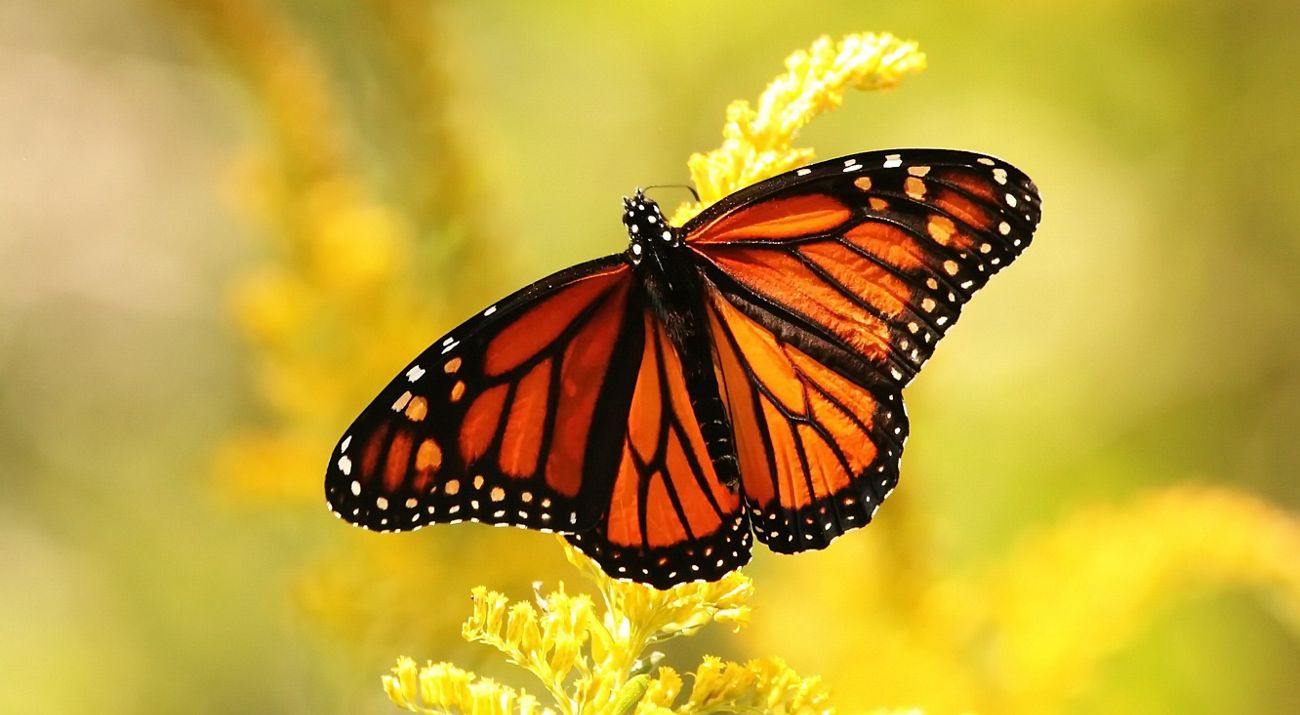
Monarch Butterfly
This iconic butterfly faces threats to its survival everywhere. Get to know this incredible species and how you can help.

Monarch Butterfly Facts
- Common name: Monarch butterfly
- Scientific name: Danaus plexippus
- Conservation status: Regionally threatened
- Lifespan: 2 to 6 weeks
- Wingspan: 3.5-4 inches
- Reproduction: Monarch butterflies lay eggs only on milkweed plants, the only food source of caterpillars
Meet the Monarch Butterfly
The monarch butterfly is one of the most easily recognized butterflies, distinctive with its black and orange wings. The color pattern is recognized by potential predators as well, signaling that the insect may contain poison from the milkweed on which it feeds as a caterpillar.
The monarch is native to the Americas but has colonized such far-flung locales as Western Europe and Australia. Traditionally two main populations have been recognized: one east of the Rocky Mountains and one west. The eastern population migrates south to central Mexico, the western to California. Recently scientists have suggested that the two populations commingle extensively.



Monarch butterfly migrations
The monarch undertakes annual generational migrations:
- In central Mexico, tens of millions of butterflies overwinter in less than 20 sites, gathering in 20-30 million per large roost.
- They begin to disperse in late February and early March, mating and then flying north, usually making it to Texas before laying their eggs on milkweed plants.
- The next generation continues the migration, leapfrogging north until the third or fourth generation arrives as far north as Canada in May and June.
- This final generation migrates up to 2,200 miles back to Mexico, arriving in early November. They begin migrating singly and then are slowly funneled into flocks as they converge on roosting sites.
As they fly south, the butterflies may fly as high as 4,000 feet while riding thermals, averaging a stately 12 miles per hour. Intermediary generations have an adult lifespan of only 4-5 weeks, but the final annual generation lives 5-7 times longer, making the long migration and then surviving to overwinter, mate and return north.


Threats facing monarch butterflies
Researchers estimate that a jaw-dropping 970 million monarchs have vanished since 1990.
There are a number of threats to monarch butterflies including habitat loss, climate change and agricultural pesticide use that is reducing milkweed populations—a plant on which the monarch lays its eggs.
There are only eleven to fourteen mountaintops in Mexico where these butterflies can find a safe haven to wait out the harsh winters in temperate climates. These areas are being targeted for new roads, housing developments and agriculture expansion. In the southern coastline of California, the stands of eucalyptus trees, Monterey pines and Monterey cypresses are in danger of being cut down due to the rate of land development in the surrounding area.
How you can help monarchs
TNC is encouraging community scientists in a number of U.S. states to help track monarchs. This data will help researchers understand if monarch migration patterns are changing due to climate change or habitat loss. TNC's land stewards are also helping monarch populations by planting local and native species of milkweed at many preserves across North America.

More nature is just a click away
Get the latest updates from conservation work near you and around the world.

